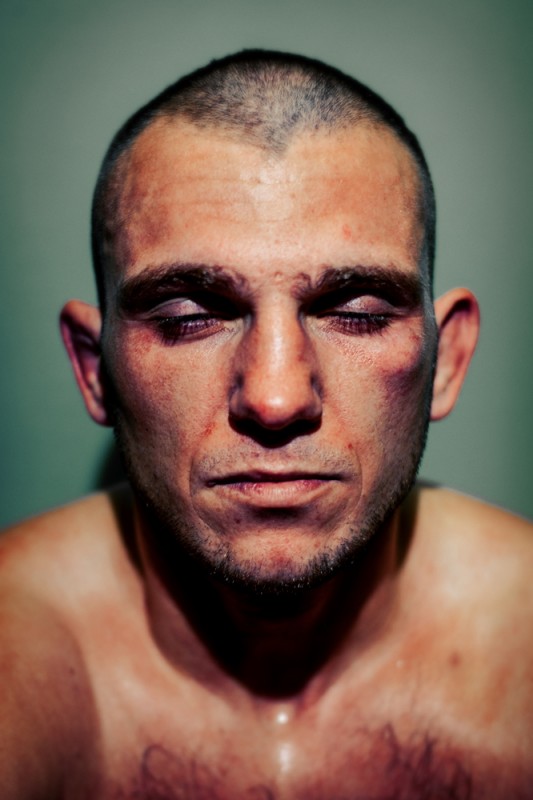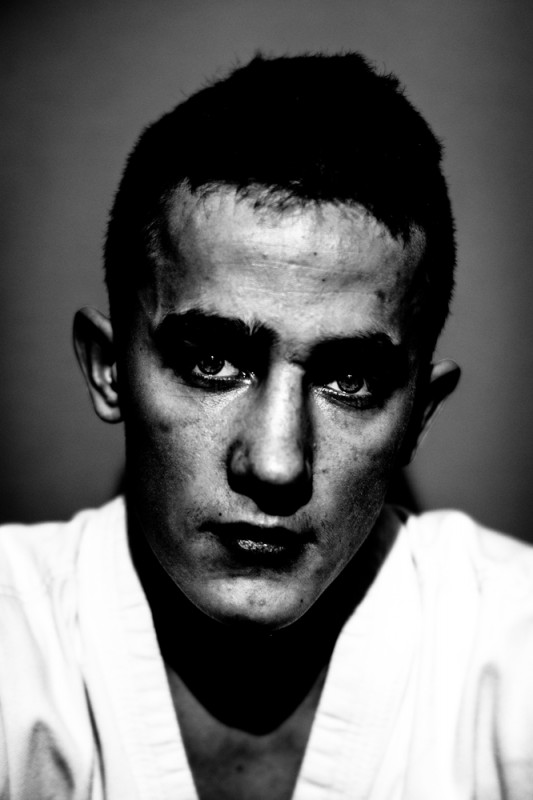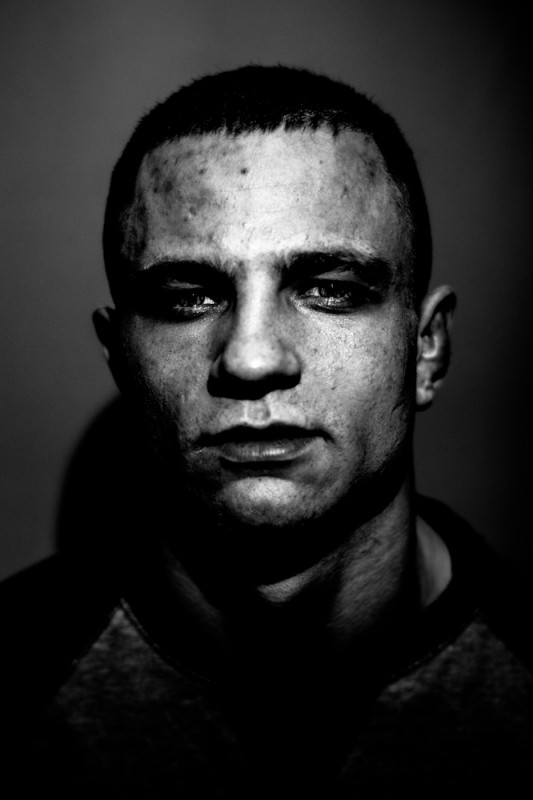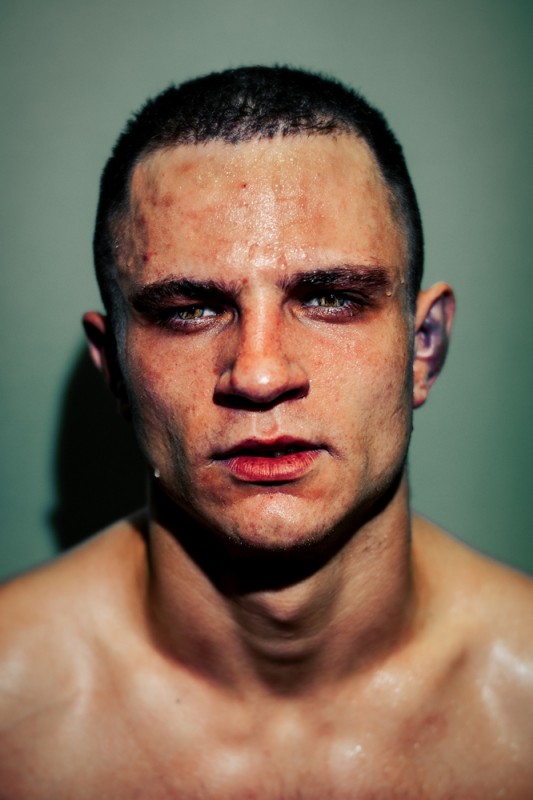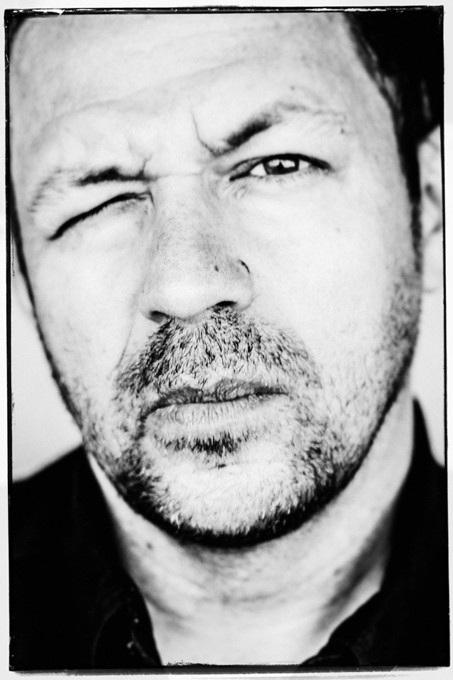Before and after
Before and after
Tomek Lendo
July 11, 2016
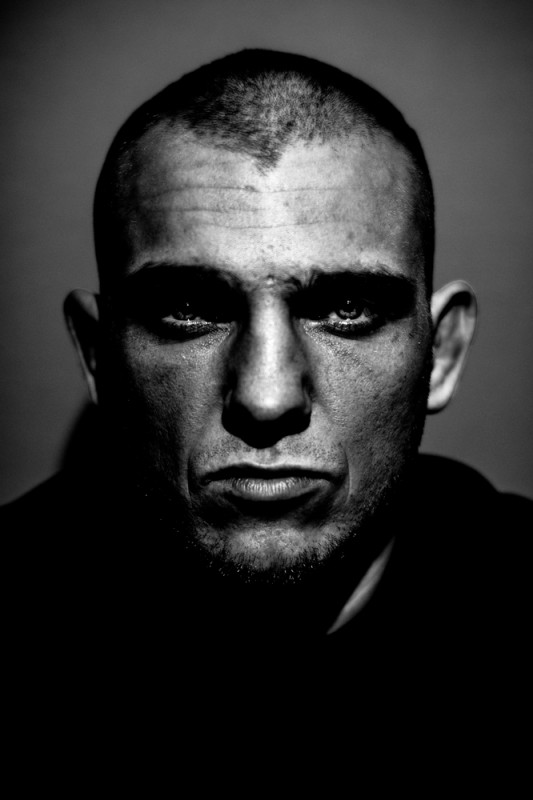
Read the full article in LFI 5/2016.
For the 5 Minutes Before, 5 Minutes After series, you decided to work with a mix of colour and black and white. Why not work exclusively in monochrome?
The “before” photos are in black and white and the “after” ones in colour, because of the exhibition’s predetermined concept, where the portraits pairs don’t hang next to each other but opposite each other, so that the viewer has to turn back and forth in order to compare the faces. People looking at the exhibition are meant to behave like contestants, in their movements, turning and looking over their shoulders. It is not intended to shock the spectator with sport brutality, and the spectacular bruises, swellings and wounds typical of boxing, for example. It was important to me to present the psychological aspect of the sport. I think I managed to achieve that in this collection.
One portrait has been acknowledged with the Grand Press Photo, which is Poland’s most important award in the arena of press photography. What impressed the jury and what is your view on this?
It’s the third time I’m a Grand Press Photo Award winner, and the second time for a portrait. In the 5 Minutes Before, 5 Minutes After cycle, the faces of the contestants probably represent the whole spectrum of behaviours seen before and after a fight – starting with the feeling of doubt and of deep concentration, and ending with the satisfaction of the loser, who, though defeated, didn’t bring shame to his club. The award-winning photo is a very evocative portrait. I think its strength comes from a kind of “universalism”. This is how people imagine great, strong warriors, regardless of the discipline, location or time in which they exist.
You live in the small Polish town of Ostrołęka. Does the place provide enough photographic inspiration or do you need more?
On the whole, I feel like a photojournalist; however, I try to avoid categorising myself with a particular genre of photography. I tend to experiment with photo casts, mixing genres and I often walk through the streets of my town. I would like my photos to bring people a greater knowledge of the world; not the world that is far away, unreachable and exotic, but rather the world that is close to us, the one around the corner. So when they see their neighbours or familiar place in the pictures, they might say, “hmmm, I didn’t know that one!”
Tomek Lendo+-
Born in Ostrołęka, Poland in 1969, Lendo graduated in Political Science from the School of Humanities in Pultusk, is a self-taught photographer, and an award-winner at the 2014, 2015 and 2016 Grand Press Photo, Polish press photo competition. Exhibitions at the Grand Press Photo, and of his Teddy’s Calvary Kosovo reportage. More

